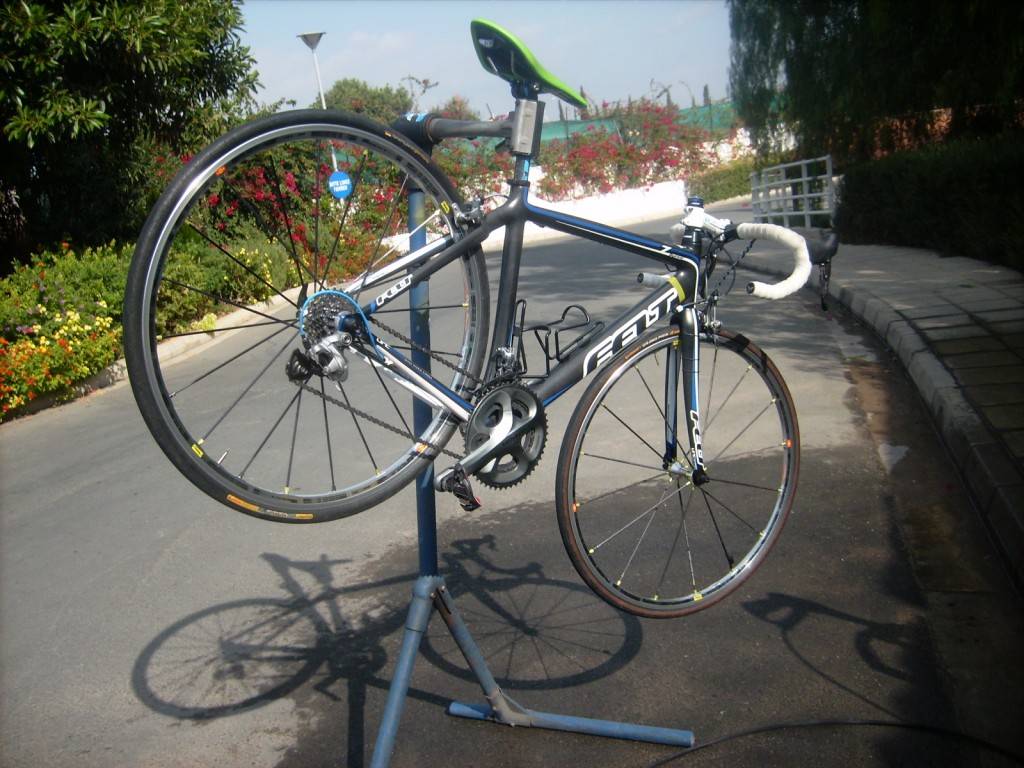Endlich ab auf die Straße. Vor den ersten sonnigen Ausfahrten ist ein Frühjahrsputz angebracht! Aber auch hier kann man Fehler machen. Mit diesen Tipps geht's richtig.
Das mag der Renner gar nicht
Damit Ihr mit dem Fahrrad lange Zeit Freude am Fahren habt, solltet Ihr niemals:
- einen Dampfstrahler oder Wasserschlauch zum Reinigen des Fahrrades verwenden
- das Fahrrad im versandeten Zustand mit Wasser aus der Leitung abspülen
- Geschirrspülmittel oder andere fettlösende Produkte zum Reinigen verwenden
- dünnflüssiges Öl (Brunox, WD 40, oder andere) an den falschen Stellen benutzen
Die richtige Reinigung
Die folgenden Pflegetipps reichen für die Radreinigung, eines professionell in der Werkstatt gewarteten Fahrrades, völlig aus. Los geht der Frühjahrsputz!
Nach einer Regenfahrt oder sandigen Tour solltet Ihr unbedingt den Schmutz eintrocknen lassen. Sobald dieser durchgetrocknet ist, könnt Ihr ihn ganz einfach mit einem Handbesen entfernen. Ich empfehle, die Kette, Zahnkränze und Kettenblätter vorher mit ein paar alten Putzlappen abzudecken. Achtet bitte beim Abbürsten darauf, dass der Staub nicht von dem gefetteten Antrieb angezogen wird, denn Schmierfett ist der beste Staubmagnet den es gibt.
Nun könnt Ihr das vorgereinigte Fahrrad komplett mit einem leicht feuchten Putztuch abwischen.
Das spezielle Rad-Reinigungsmittel wird immer dünn auf ein sauberes Putztuch aufgetragen und in keinem Fall auf den Rahmen oder die Komponenten gesprüht. Aus dem einfachen Grund, dass jedes dünnflüssiges Reinigungsmittel durch die Kapillarwirkung in sämtliche Lager kriecht und den zur störungsfreien Funktion nötigen Schmierfilm zerstört. Reinigungsmittel sollten daher immer nur sparsam verwendet werden.
Anderweitig sollte man an den Reinigungstüchern nie sparen, denn schmutzige und zugesetzte Putzlappen zerkratzen nur die Oberflächen des Lackes und der Komponenten.
Entspannung für die Kette
Nun schalten wir den Umwerfer (vordere Schaltung) und das Schaltwerk (hinten) auf die kleinsten Zahnräder. Damit erreichen wir eine größtmögliche Entspannung der Kette, um diese besser reinigen zu können.
Wir nehmen nun ein Putztuch und besprühen es ein wenig mit dünnflüssigem Öl. Mit dem leicht öligem Tuch nehmen wir nun die Kette in die Hand und drehen die Kurbeln des Fahrrades rückwärts. Lasst die Kette S-förmig durch die Finger laufen, dadurch entfernt ihr den Staub von der Kette. Um schmutzige Finger zu vermeiden empfehle ich euch, dafür einen Gummihandschuh zu verwenden.
Für die Zwischenräume
Nun reinigen wir alle Zahnrad-Zwischenräume mit einem gefalteten Putztuch. Ich verwende hierfür die etwas dickeren Knopfleisten von alten Hemden oder ausgemustertes Bettzeug. Bei starken Verschmutzungen (z.B. zugesetzte Zahnräder) verwende ich in der Werkstatt eine Stahlbürste zum Reinigen des gesamten Antriebs.
Kette fetten
Anschließend fetten wir die Kette auf der Innenseite und drehen dabei den Antrieb rückwärts. Ich verwende zur Kettenschmierung ausschließlich Produkte aus druckfreien Flaschen. Bei Kettensprays aus der Dose haftet der Sprühnebel den Bremsflächen an. Da dünnflüssige Öle das Fett aus den Rollen der Kette spült, verwende ich zum „Kettenrollen“-schmieren nur zähes Kettenfett und ziehe die gegebenenfalls überschüssigen Reste nach dem einwirken mit schon vorher verwendeten Öllappen ab. Als Abschluss gebe ich in die Gleitlager von den Bremsen und der Schaltung noch einen kleinen Tropfen Öl.
Vorsicht
Es darf in keinem Fall Öl an die Naben, Steuersatz oder das Tretlager kommen, da diese mit Lagerfett gefüllt sind und das dünne Öl die Druckfestigkeit des Lagerfettes komplett zerstört. Im Zweifel unterlasst lieber „die letzte Ölung“ eures Fahrrades und lasst euch bei beim Radhändler eures Vertrauens beraten.
Unser Überblick soll euch bitte nicht dazu verleiten, etwas auszuführen, das man nicht gelernt hat oder das man sich nicht zutraut. Im Zweifelsfalle wendet euch an eueren Radhändler oder -mechaniker!




















